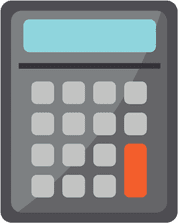In the last post, we touched on using a self-directed IRA to invest in multifamily syndication deals. This is a popular approach because of the higher annual returns real estate tends to offer, versus investing in Wall Street.
But there’s a catch. The UBIT, or Unrelated Business Income Tax, means you could be taxed inside your IRA. It’s a real doozy!
Today, I’m going to show you how the UBIT tax works and better yet – how to avoid it. But first, if you missed it, take a moment and review the important points from my last post to understand the benefits of using your IRA to invest, as well as some of the complications with that process.
Here’s the Cliff Notes:
Using an IRA To Invest in Multifamily Deals
- You can use retirement funds within a self-directed IRA to invest in real estate, with the main advantage being an increase in your average annual return.
- The key is to find a custodian that understands the tax code, will allow you to invest specifically in syndicated real estate deals, is setup to allow for electronic money transfers, and works swiftly to execute documents on your behalf.
- Don’t wait until you have an active deal to transfer your funds. Start the process now so you are in the ready position, and be sure to ask the opinion of groups like ours about the custodians you are vetting.
- Be aware that there may be serious tax implications in this strategy, unless you set yourself up correctly.
Related: How to Invest Using Retirement Funds
Understanding UBIT Tax
That last bullet point is referring to this UBIT tax. It specifically affects investments that are leveraged to have some kind of debt or loan attached to it, which of course applies to multifamily real estate. This part of the tax code taxes the portion of your profit that is leveraged.
Let me give you an example:
Let’s say you make a $50,000 investment with Nighthawk Equity and we double that for you in 5-6 years. You now have a $50,000 gain, with an 80% loan on the building. This means that 80% of that gain is taxable. So, you have a $35,000 taxable gain at a 30% tax rate. You end up paying nearly $11,000 in taxes!
I had to go through this my myself about 15 years ago. I had to literally get a tax ID from an IRA, file tax returns, pay penalties and interest for not having filed tax returns, and then pay all these taxes in my IRA. I'm like, what in the world is this?!
My nightmare experience is your gain. A lot of people don't know this stuff, and we don't want to complicate matters when people come in to our investments. We ask that you use your self-directed IRA custodian to get the investment going, and then we will transfer those monies into a vehicle that solves the UBIT problem.
Solution: Solo 401k
This vehicle is the Solo 401k, a type of QRP – Qualified Retirement Plan. This specialized plan gets around all of these issues, meaning that you have checkbook control over the IRA and can sign your own documents. You do have to open an account, but these institutions act like banks, so you will have access to electronic funds transfers (ACH/Wires) to move money quickly.
You control the accounts, you sign your own paperwork, and it's beautiful. Right? The only downside of the Solo 401k is that it costs about $3,000 to set up. But, it avoids the entire UBIT process and saves you tens of thousands of dollars in taxes in the long run. Isn’t that worth the initial setup fee? We think so.
As a bonus, you can actually borrow up to $50,000 from your QRP without paying any kind of interest or penalty. You can use it for almost anything, really, without paying a penalty. This is another great angle and why we really love the QRP.
Setting Yourself Up for Success
The process to setup a Solo 401k (or QRP) is pretty simple. You will contact the provider and they’ll set up a phone call to ask a few questions. There's a questionnaire, and then you get a document to sign via DocuSign, with instructions to set up your account with a financial institution.
And that's it, you're essentially done. It’s a very straight forward process. At least, that what we have experienced with providers like Total Control Financial. Damion Lupo is the founder and a great friend of ours. He actually has a free book that he is making available to our investors.
In this FREE book you’ll learn:
- How to get your 401(k) and IRA money in your hands, in your checking account and under your control.
- AVOID the UDFI Tax that you get hit with on ANY Self Directed IRA!
- How to never pay another fee to an adviser for “Holding your money”
- How to defer taxes on up to $100k+ in income every year
- How to 100% protect your investments from any lawsuit and even bankruptcy
- How to buy gold and silver with your retirement money and legally take physical possession of it
? Get Your Free Copy: www.themichaelblank.com/qrp
I hope you learned a lot from this post. You’re guaranteed to learn a great deal more from Damion’s book.

